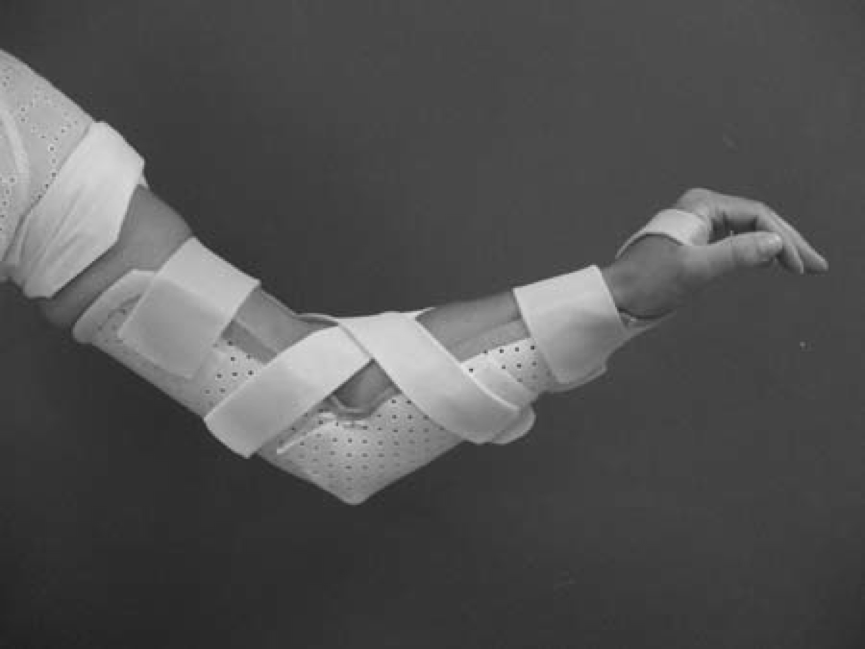Elbow Fracture Rehabilitation Protocol
(Elbow Fractures Rehabilitation.pdf)
The Elbow Joint is the most complex joint in the body. In order for it to recover to its best function consistent rehabilitation is essential in order to obtain the optimal outcome after injury. It is important that this be carefully carried out under the supervision of a therapist.
Injuries to the elbow can be very painful and this can cause difficulties with completing the required exercises. Stiffness is often occurs after injury.
Before embarking on rehabilitation program be sure that your therapist is aware of the nature and extent of the injury. Each elbow needs specific rehabilitation based on the injury type and nature of surgery performed.
General Advice
Generally patients who have had operative management of an elbow fracture will have either a bulky bandage or a plaster at 80-90 deg of flexion. During the first 10 days the wound should rest. Small elbow movement’s inline with the post-operative instructions may be begun, during this period. Full range of motion and aggressive rehabilitation should be avoided until the wound has healed.
Fractures that are stable after operation should start rehabilitation at 2 weeks. From 2-4 weeks pain medication should be taken regularly as prescribed. Not waiting for pain to be present will allow movement of the elbow to begin helping to minimising stiffness. It is best to do exercises on a frequent basis through the day. Multiple sessions of short duration are better than longer sessions done only once or twice.
Swelling
Swelling is often a problem after elbow injury. To minimise the effect of the swelling the elbow should be elevated above heart level whenever possible. During the initial 1-2 weeks when asleep and awake the elbow should be supported on pillows to achieve this. Ice may be applied several times a day for 20 mins and is an excellent pain-relieving agent.
Fractures
 If splinting is required this should be carried out as demonstrated. If there has been an associated dislocation or a ligament repair then the elbow should be rehabilitated along the elbow dislocation protocol lines.
If splinting is required this should be carried out as demonstrated. If there has been an associated dislocation or a ligament repair then the elbow should be rehabilitated along the elbow dislocation protocol lines.
Post-op splint passing both the elbow and the wrist applied on day 2-5 24 hours a day, except for during range of motion exercises, in 80-90 deg of flexion to maximize stability and capsular volume. This needs to be easily removable to allow for ROM exercises. Positioning of forearm rotation is dependent on the operative findings and surgery – please ask you surgeon about this or see the end of this document for guidelines.
Gentle active shoulder pendular exercises out of the sling should be encouraged with the forearm supported by the other arm. Range of motion exercises of the wrist should also be encouraged.
Sleeping
This should be done on your back with the elbow supported on either side by a pillow.
Range of Motion Exercises
Generally these should commence around day 7 elbow fractures. Free active assisted flexion may be done early. Free active extension lying with shoulder 90 deg of abduction is a good way to commence these exercises. As time goes on this can be done in a seated position. Active pronation and supination should be commenced early. Pendular shoulder exercises and wrist exercises should also be encouraged.
Follow-up
Generally xrays are done at 1 and 6 weeks.
Xray at anytime if patient feels increasing pain and loss of range of motion.
Starting from week 6-8 and onwards and gradually stretch out anterior capsule by active and passive extension exercises.
If using a range of motion brace then consider increasing the extension by 10 deg per week starting from week 4.
